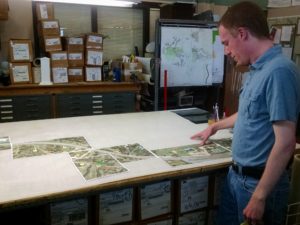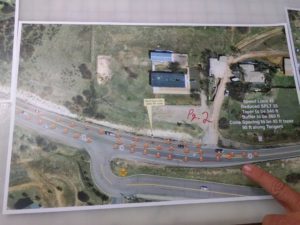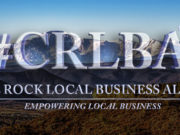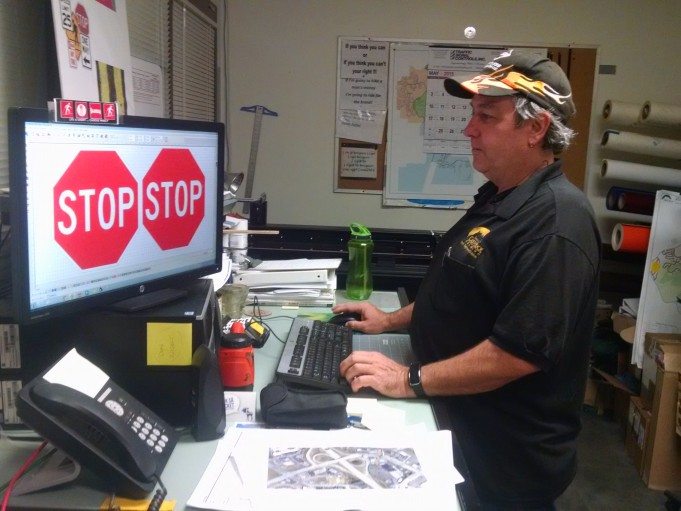Street signs are an important part of our daily navigation on the road. Without them, drivers wouldn’t be prompted to ‘yield’ when intersecting with a new traffic lane, know where to park or understand to ‘share the road’ with bicyclists – instead the roads would probably resemble something from the days of the Wild West. As Castle Rock continues to grow, the team that handles the signage for the Town is working overtime to keep traffic flowing.
“We’ve got a total of five guys– three full-time employees and two that are seasonal in that division,” noted Ryan Germeroth, Transportation Planning and Traffic Engineering Manager for Castle Rock. “Year-round, they are responsible for all the signs of the Town, as well as markings, striping, installation and maintenance.” And that’s no easy task when taking into account that they have the responsibility of maintaining the 600 plus lane miles of roadway currently in Town.
As Castle Rock continues to expand outward in all directions, new communities are spawning in the Meadows, Castle Oaks, Crystal Valley and Terrain. Of course, when new pavement is laid, new signs come along with the plan. “The developers provide an initial plan to see what is needed to Megan Lobban, our Engineering Technician, so she can look through the proposed plan and make comments, if needed,” said Germeroth. 
Once approved by the Town, the contractor for the developers then places signs around the new neighborhood. “After that, our inspectors can then go in to make sure that the signs have been properly installed and are in the correct location,” Germeroth stated. Because if they aren’t, the cost, time and labor for moving the sign(s) can add up, dribbling away at tax dollars to the tune of $150 a pop.
Has the Town ever had to remove a sign once it has been put up? Luckily, in the two years that Germeroth has held his position, not many. And the signs that have had to be taken down were because the wrong sign was put in place by accident and quickly replaced. Hence the margin for error is minimal as several pairs of eyes double and triple check every piece of signage that leaves the shop.
From that point, the division supervisor takes the baton to log where the new sign is placed in the database of the entire Town’s roadways. And typically having a seven-year lifespan, new signs then become part of the Town’s ‘maintenance plan.’ Don Wisely, Signs and Markings Supervisor watches over the detailed system that allows him to see dots that represent each of the more than 13,000 signs that navigate people through Castle Rock.
However, not all signs get such a lengthy existence, because of wear and tear or because they lose their effectiveness. Some traffic calming signs are periodically moved on the roadways to stay fresh.
As residents become increasingly comfortable with radar signs that may initially to slow speeding traffic, the sign flashing the speed of the ‘swift’ moving car, over a short time, loses its effect. “The reason we move those particular signs around is that we have found the longer you leave them in place, eventually people begin to ignore them. Moving those signs around Town is intentional,” noted Germeroth. 
So the department isn’t expecting to enjoy a lull in the workday anytime soon. They will continue humming along, in an effort to keep up with the birth of new developments, all while sticking to the standards that have been laid out in the Manual on Uniform Traffic Control Devices – an industry book that sets specific guidelines for any signs appearing roadways.
“We are given standards, guidance and options – you should do this, but you don’t have to – most often, you simply want people to get used to what to expect on the roads,” he said. Because when people know what to expect, everyone’s daily commute is more likely to be free from accidents and we can all get safely wherever it is we need to go.













